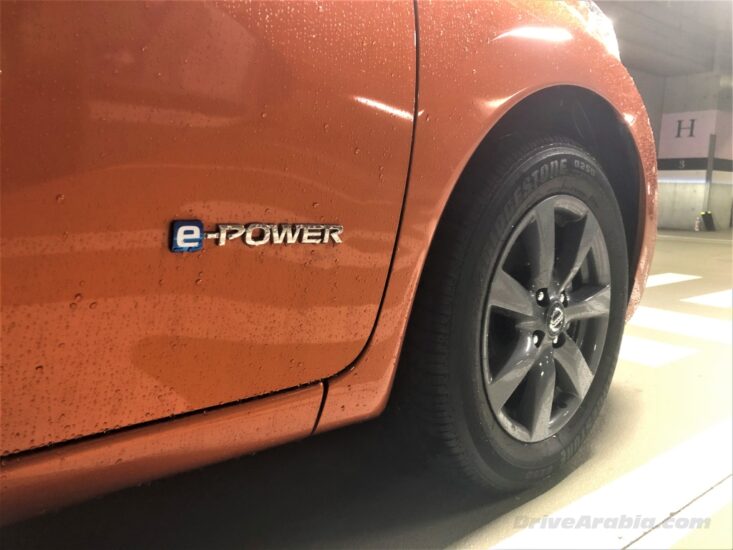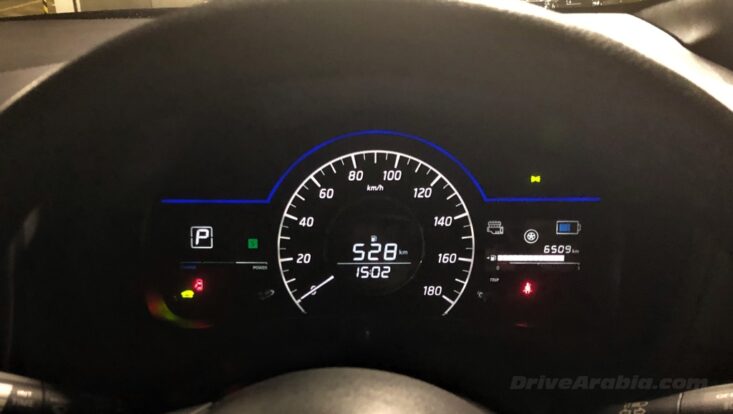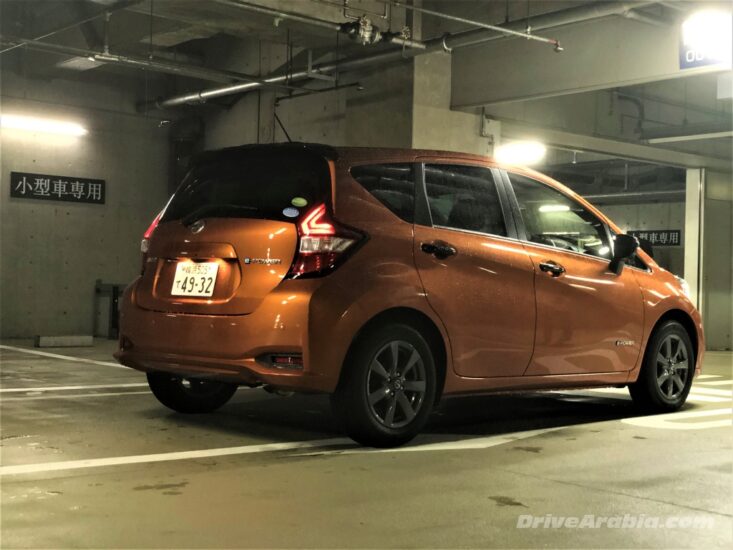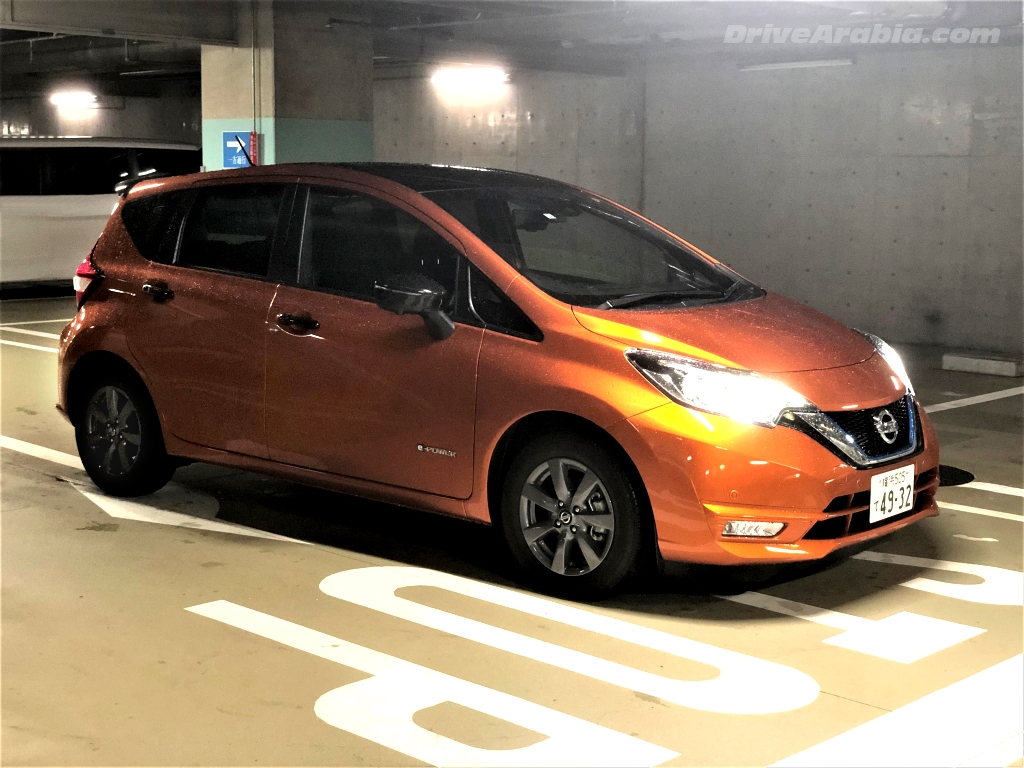First drive: 2019 Nissan Note e-Power in Japan
In all the faff over Tesla this and Tesla that, most people idolising it tend to forget that a fully electric car is absolutely useless for the majority of people who live in apartments, which is why we’ve never shown any enthusiasm for EVs. But what if you could get the benefits of an electric car without the hassle of plugging one up to a faraway public charging station for an hour? That’s where the Nissan Note e-Power comes in, and it has become the top-selling car in apartment-heavy Japan.
Not sold in the Middle East, the Nissan Note is one of those little subcompact hatchbacks that come with a big interior. It doesn’t look particularly enticing and it can be had with a traditional petrol engine, but 70% of sales in Japan are accounted for by the e-Power version.

The e-Power system involves a 80kW/254 Nm electric motor which uses a small 78 hp/103 Nm 1.2-litre 3-cylinder engine as a generator for a 1.5kW battery. While a conventional hybrid such as a Toyota Prius uses the petrol engine to drive the wheels directly while the electric motor runs in parallel, the purpose of the e-POWER’s petrol engine is just to charge the battery. That battery powers the electric motor that turns the wheels, so essentially, the Note e-Power drives like an electric car. There isn’t even a plug point to charge it directly from a station or a wall socket.
The advantage of this is that all the energy losses that come with a petrol engine driving the wheels directly are eliminated. That leads to much better fuel efficiency as well as electric-car performance.
On start-up, the Note is silent and initial acceleration is instant thanks to the electric-motor propulsion system. At moderate throttle input, the system draws charge from the battery but when needed, the engine kicks in as a generator to charge up the battery. There is a noticeable drone when that happens, but the way it revs is unrelated to the speeds you are doing, as it runs at a constant rpm that varies as needed. The gauge cluster shows the battery charge in a little display, but it’s not important because there is no range anxiety as in a Tesla Model 3. You only have to worry about your usual petrol-level gauge.

Depending on your driving style, it has a theoretical range of over 1300 km on a single 47-litre tank of petrol, which translates to a claimed 2.9 litres/100 km (34 km/litre). That’s a third less than a Prius. And the price itself is about a third less than that of a Prius.
Our time with the Note e-Power was limited because we drove the right-hand-drive car during a severe rainstorm on the streets of Tokyo, an aftereffect of the mega-typhoon that hit Japan just a few days before we landed there. However, we got enough of a feel for it to have a rather positive experience.
Once you start the car and slip the unconventional “gear shifter” into Drive, the car starts moving. There are three driving modes — Normal, Eco and Sport. “Normal” feels like a regular car with a CVT automatic on acceleration and deceleration. Except that it takes off like a more powerful car thanks to its electric drivetrain and is quite spritely around town without being twitchy. It’s not a fast car, but it has the solid kick where it’s more useful.

In “Eco” mode, the power is lowered and engine braking is maximised to charge the battery. Aside from regenerative braking, this also activates the “e-Pedal” feature, which allows for one-pedal driving to a certain extent. So lifting off the throttle makes the car slow down much quicker, which lets you roll to a stop without using the brake pedal at all (while the rear brake light still work). You still have to press the brake pedal for a quicker emergency stop, but you can use the e-Pedal feature to crawl in traffic without having to use the brake pedal at all. It takes a while to get used to, but once you figure it out, it’s easy. The “Sport” mode also has extra engine braking as well as more power from the motor.
The Note e-Power is reasonably quiet and smooth, has a very spacious interior (although with all hard-plastic cabin panels), is hugely efficient and generally safe (it comes with lane-departure warning and collision prevention assistance in Japan), has lower emissions and offers a completely hassle-free electric-car driving experience at a fraction of the price of a full EV. That makes it ready for streets anywhere in the world, including the Middle East. It’s already on sale from Asia to South America, with Europe next on the plan, and Nissan says they will expand it to more models and markets over the next few years. A next-gen model is rumoured to be on the way too, which should improve its looks with Nissan’s new corporate styling. Bring it on I say.
Photos by Mashfique H. Chowdhury and Nissan.







Comments
Khaled Saleh
I want one in Egypt
Altaib Abdallah
They don’t have competitions to win
Abdallah Alsaleh
This is a real innovation
Hajra
interesting car
TALIB
Is this E-Power gona touch the grounds of GCC any time soon? Curious…
Mashfique Hussain Chowdhury
Unknown as of now.